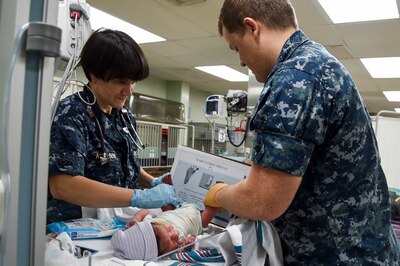By Marine Corps Lance Cpl. Niles Lee Marine Forces Reserve
NEW ORLEANS, Nov. 8, 2017 — When Hurricane Harvey made
landfall in southeast Texas, Aug. 25, it flooded thousands of homes and
displaced more than 30,000 people. In response to the devastation, thousands of
people from across the country rushed to Texas to help, taking time away from
their homes and work to help others out.
Among those who headed to Texas was Marine Corps Cpl. Eric
Gore, a dark-haired, easygoing and friendly chemical, biological, radiological
and nuclear defense specialist at Headquarters Battalion, Marine Forces Reserve
here.
“I just wanted to help my fellow countrymen out,” Gore said.
“Helping our neighbors in Texas was something I was able to do, so I went.”
Gore, his unit’s CBRN training noncommissioned officer, was
sitting at home going through social media when he first saw the effects of
Hurricane Harvey. At that moment he decided he had to take leave and join the
relief efforts.
“I knew I had the capacity to do something, but instead I
was just sitting at work going through my day-to-day tasks,” he said. “There’s
no sense in standing-by when people need assistance, especially when you’re
perfectly able to help them.”
Gore left New Orleans Sept. 1, taking an additional four
days of leave after the Labor Day weekend to extend his time in Texas.
Cajun Navy
He first drove with another Marine to Beaumont, Texas, where
they linked up with members of the Cajun Navy, an informal group of private
boat owners who helped in the relief efforts following 2005’s Hurricane
Katrina.
With the Cajun Navy, Gore used his experience in the Marines
to first help them set up an operations center in the back office of a dance
studio. He then communicated with members of the Cajun Navy through phone calls
and mobile apps to direct vehicles to distress calls and organize supply
convoys to flooded neighborhoods.
“Emergency management is at the heart of my job,” Gore said.
“CBRN is the 9/11 of the Marine Corps. Everyone just thinks we run the gas
chambers, but we’re also trained to respond to hazmat incidents and things of
that nature.”
Besides organizing and directing assets in the makeshift
command center, Gore also participated in many of the supply convoys,
personally delivering supplies to people affected by Hurricane Harvey whenever
an extra hand was needed.
“I did as much as I could,” he said. “But, in reality, I was
a small part of the relief efforts. Without the help of all the individuals
involved donating their time and money to relief efforts, none of my work would
have been possible.”
Gore said he planned to take leave again to help in Puerto
Rico after Hurricane Maria, which made landfall there Sept. 20 and left the
majority of Puerto Ricans without power. He organized a private flight to the
island with a cargo of 12 donated generators, as well as additional relief
supplies. However, he had to cancel his plans due to Hurricane Nate, which made
landfall in New Orleans.
He said he is still communicating with members of the Cajun
Navy though social media, instant messaging and phone apps, hoping to head to
Puerto Rico in the near future.









